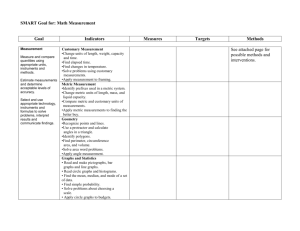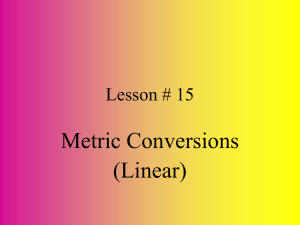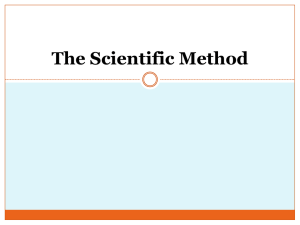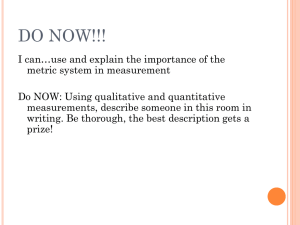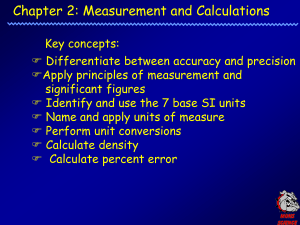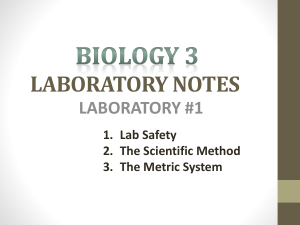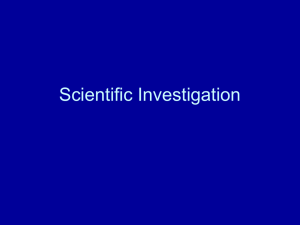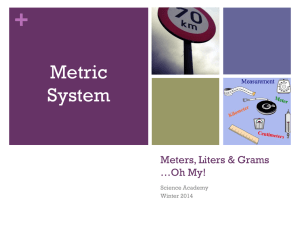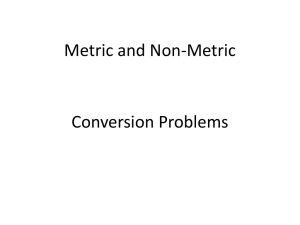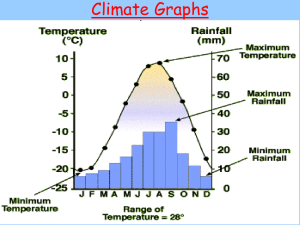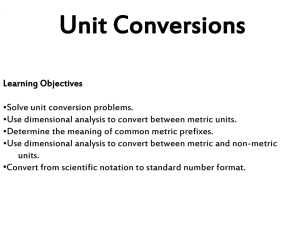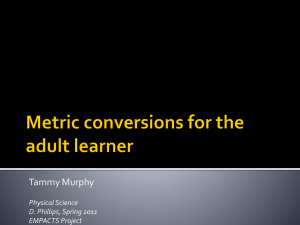Chapter 1
advertisement
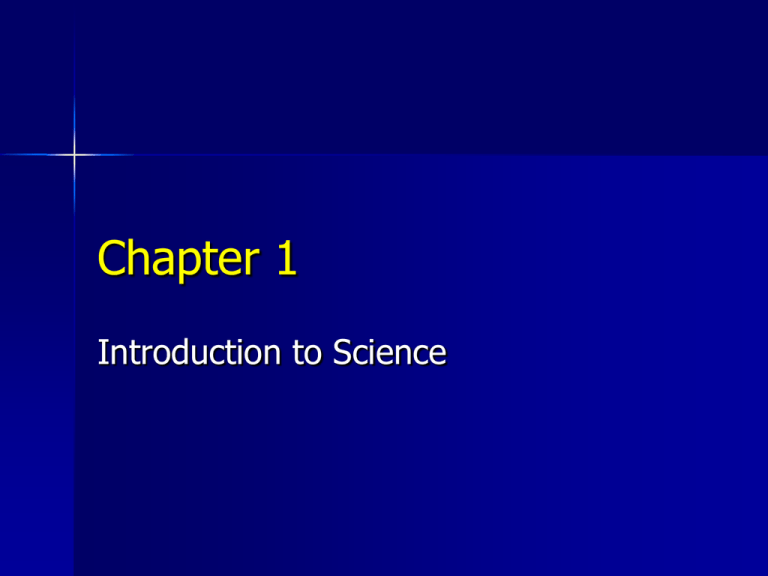
Chapter 1 Introduction to Science What is Science? Science is what scientists do Science is trying to explain the world around us Science is a way of thinking “Science is a system of knowledge based on facts or principles Book talks about “social science” We prefer social studies Branches of Science Science Biological Science Physical Science Earth Science Branches of Science Science Biological Science Physical Science Earth Science Zoology Botany Ecology Science of living things Branches of Science Science Biological Science Physics Chemistry Physical Science Earth Science Science of matter and energy Branches of Science Science Biological Science Physical Science Earth Science Geology The systems of the earth Meteorology Astronomy Branches of Science There are many more branches to biological and earth sciences The three categories overlap Biochemistry Astrobiology Geophysics Science and Technology Pure Science - search for scientific knowledge Technology – application of science Two are interrelated Technology develops new tools for investigating nature New science leads to new applications Scientific Theory A reasoned explanation tested by many observations and experiments Tells why things are Three things – Must explain clearly and simply – Must be repeatable – Must be able to make predictions Theories can be changed or modified by new evidence Scientific Laws Describe what happens Quantitative – use numbers and equations to describe Often equations are part of the law Mathematics is a universal language Law vs. Theory Law Theory Describes how Explains why Summarizes observations Agrees with observations Usually an equation Predicts new discoveries Observations Qualitative – describe with words – Hot , red, large Quantitative – describe with numbers – 100° , 10 meters, 3.46 grams Scientists prefer quantitative Easy to agree upon No personal bias Models A representation of some object or event Made to better understand it Often used if real thing is too big, small or complex. Come in a variety of forms – Physical models – Diagrams – Computer models The Scientific Method A way of thinking about and solving problems It is a logical method You do it all the time The Scientific Method Starts with observation- can be anything Question – what do you want to know? Gather data- what is already known Form hypothesis- a possible explanation Design experiment to test hypothesis – This is the hard part The Scientific Method Experiments generate more observations Allow us to draw conclusions about hypothesis – Support the hypothesis or not – If not modify hypothesis The Scientific Method Observe Formulate a question Experiment tests hypothesis Collect data Form hypothesis Observation Observation Observation Draw Conclusions The Scientific Method Does not always work this way, but gives a way of guiding our thinking Hard part is testing only one variable at a time. Changing only one thing at a time If you change more than one, you don’t know which one is the cause Measurement A number without a unit is meaningless It is 4 long 4 what? Scientists use the metric system or SI for le System Internationale d’Units Makes sharing data easier Metric System Measurements have two parts Base unit and prefix Prefixes multiply or divide the base units by multiples 10 Prefixes are the same for all units Base Units Quantity Unit Abbreviation Length meter m Mass gram g Temperature kelvin K Electric current ampere A Amount of substance mole mol Luminous intensity cd candela Prefixes Prefix Symbol Meaning kilok thousand As a number 1,000 mega- M million 1,000,000 giga- G billion 1,000,000,000 deci- d tenth 0.1 centi- c hundredth 0.01 milli- m thousandth 0.001 micro- m millionth 0.000 001 Tables Organizing data into groups Putting those groups into rows and columns Gives us an easy way to compare data Graphs Give a visual representation of data Summarizes data. Two types of variables – Independent variable the thing you have control over – Dependent variable the thing that you don’t have control over. Three types of graphs line, bar, and circle Circle Graphs Often called a pie 42% chart divided into parts easy to compare to whole amount. Use several to show changes over time 33% 25% Buildings Transportation Industrial Bar Graphs Bar Graphs- wide columns used things like weight, height , and length. Compare quantities 12 10 8 6 4 2 0 Production of Energy per gram Carbohydrates Proteins Fats Line Graphs Line Graphs- compares sets of data, show change and patterns over time. 35 30 25 New York San Diego Salina Cruz 20 15 10 5 0 J F M A M J J A S O N D Graphs include A title Labeled axes A consistent scale. Metric conversions Changing the unit Does not change the size of the measurement If the unit gets bigger the number gets smaller If the unit gets smaller the number gets bigger Math with multiples of 10 We will cancel out units to make sure we set the problem up right Metric conversions A common race is the 5 K, which is 5 km. How many meters is this? Given unit -km Unit wanted –m The unit gets smaller, so the number must get bigger 1000 m = 1 km Metric conversions 1000 m Distance in m = 5 km x 1 km Distance in m = 5000 m Metric conversions The recommended daily requirement of vitamin C is 500 mg. How many grams is this? mass in g = 500 mg mass in g = 0.5 m 1g x 1000 mg Measuring length 0 Use a ruler Line up from zero not the end of the ruler Small divisions are millimeters 1 2 3 4 Volume Liter a common unit 1 L about 1/4 of a gallon - a quart 1 mL is about 20 drops of water or 1 sugar cube Measuring Volume Use a graduated cylinder. The water will curve in the cylinder. Hold it level with your eye. Read the bottom of the curve. Measures in milliliters mL. 30 20 10 Mass weight is a force, is the amount of matter. 1gram is defined as the mass of 1 cm3 of water at 4 ºC. 1 kg = 1 L of water 1 kg = 2.5 lbs 1 g = 1 paper clip 1 mg = 10 grains of salt or 2 drops of water. Measuring Mass Use a triple beam balance First balance it at zero. Then put item on Then move one weight at a time When balanced, add up the weights 0 10 20 0 0 1 30 40 100 2 3 50 200 4 60 70 300 5 6 7 80 90 100 400 500 8 9 10

